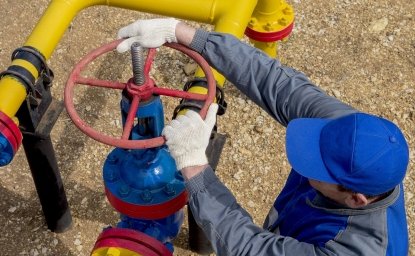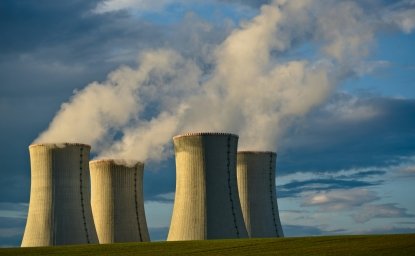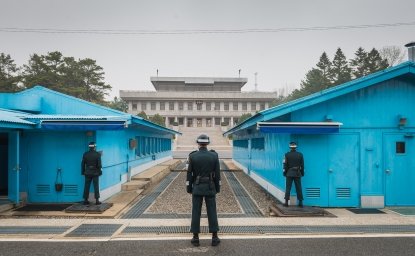Brazil's 1975 Nuclear Agreement with West Germany



Brazil’s earliest attempts to master the nuclear fuel cycle date back to 1953-1954, when Admiral Álvaro Alberto da Motta e Silva purchased centrifuges for uranium enrichment purposes from the University of Göttingen. Although the equipment was not delivered because it was seized and detained by order of the United States, Brazil’s goal of obtaining the technology to master the entire nuclear fuel-cycle continued to be pursued intermittently over the following decades. By 1968, the main outlines of a nuclear program and an institutional framework were in place, including several atomic research facilities, a National Nuclear Commission and working groups that connected nuclear specialists from different components of the Brazilian bureaucracy, and also included international specialists appointed by the IAEA [Document 1]. At the same time, Brazil was defining its diplomatic stance on proliferation: signing but not implementing the Treaty of Tlatelolco—which established a nuclear weapons-free-zone in Latin America—and refusing to sign the Nuclear Non-Proliferation Treaty.
In 1971 the Brazilian National Commission on Nuclear Energy (CNEN) and Eletrobrás subcontracted Westinghouse to build a nuclear reactor in Angra dos Reis, in the southeastern state of Rio de Janeiro, but failed to secure the transfer of sensitive reactor technology. In June 1974 the US Atomic Energy Commission, alleging insufficient capacity, reneged on future commercial supply of enriched uranium for several clients, including Brazil’s Angra nuclear plant. The May 1974 Indian nuclear test was a contributing factor to the United States’ shift in its international nuclear fuel supply policy, as well.
This cemented the notion in Brazil that the US was unreliable as a source of nuclear fuel and, moreover, seemed to be deliberately stalling Brazil’s nuclear program. This, in turn, highlighted in Brazilian eyes the need for the development of autonomous enrichment capability by partnering up with a nuclear industrial country other than the United States [Document 2, Document 3]. After assessing its options, and building on a working relationship that dated back to a 1969 Agreement on Scientific and Technological Cooperation [Document 4, Document 5], Brazil penned with West Germany in 1975 a deal that envisaged the construction of a two new plants at the Angra site (Angra II and III) with increasing participation of Brazilian local industries as well as the establishment of uranium fuel enrichment and plutonium reprocessing facilities. This program was to be the largest contract for transfer of nuclear technology in history and one of the largest industrial projects ever undertaken in Brazil. Although it would comprise the creation of several state-run companies and involvement of various industrial sectors, the agreement was negotiated hastily and secretly, with almost no input from the private sector or the scientific community, much less civil society.
Although heralded at the time as a major step toward nuclear independence for Brazil, the agreement with Germany turned out to have several shortcomings [Document 6, Document 1]. While the first drafts of the agreement included the transfer of ultra-centrifugation enrichment technology, concerned US officials pressed the German side to offer instead joint development of the jet-nozzle enrichment technology—an unproven technology that was still undergoing testing in Germany—and to sign a trilateral safeguards agreement between Brazil, Germany and the International Atomic Energy Agency. Uranium enrichment by jet nozzle, was considered by many scientists at the time, to be too energy-intensive and expensive as compared with proven centrifuge technology. Furthermore, the safeguards to which Brazil had subjected itself were more restrictive than initially expected.
Technical, financial and administrative hurdles in both the Brazilian and German sides delayed the construction of the nuclear plants in Angra dos Reis. Ultimately, ballooning costs with little demonstrable result, coupled with the pressure imposed by outside players and the waning support for nuclear technology in Bonn brought German-Brazilian nuclear cooperation to a virtual halt by the end of the 1970s. Angra II, the first plant built within the consortium only became operational in 2000 after extensive renegotiation. As of 2011, the plant only accounts for roughly 2.5% of Brazilian energy production. Angra III is still under construction as of today.
The unexpected challenges that developed—partially as a result of US pressure—in the Brazilian-West German nuclear agreement caused Brazil to seek a different path towards achieving its main goal—mastery of the nuclear fuel cycle. The so-called autonomous, or parallel, nuclear program began in 1978 [1]. Free of international safeguards, Brazil planned to develop its own indigenous enrichment process as well as a nuclear powered-submarine and nuclear explosives. The means by which Brazil would do this included purchases of material and know-how in the international atomic “bazaar,” and cooperation agreements with other developing countries like Iraq, China and, most importantly, Argentina.
Document 1: Oral History interview with Dr Witold Lepecki
In his interview, nuclear engineer Dr. Witold Lepecki and former member of the “Thorium Group” and the “Lane Group” in the 1960s describes the functions of these Brazilian working groups and negotiations involving several aspects of the nuclear agreement with potential partner countries, most notably the US and France. Interviews with key nuclear aides covering the 1970s and 1980s suggest that acceptance of jet-nozzle technology might have been due to ignorance of technical issues on the part of the Brazilian negotiators, or lack of alternative ways to seal the deal with Germany. Interviews with several officials also indicate that the safeguards in the agreements with Germany and with the IAEA went well beyond what was initially projected and were even more restrictive than safeguards under the NPT. One interviewee commented extensively on corruption and graft in the context of the agreement with Germany and the pressures exerted by German commercial interests in the renegotiation of the agreement in the 1990s.
Document 2: Brazilian options for nuclear cooperation, 19 April 1971
Source: PNB pn a 1968.06.15 pp. 145- 148
A secret report addressed to Minister of Foreign Affairs Mario Gibson Barbosa by Amb. Paulo Nogueira Batista (Brazilian Embassy, Bonn) describing alternatives for the establishment of comprehensive, long-term nuclear agreements between Brazil and a “country to be defined.” The report suggests that given the trends in uranium production in the US and Europe, Brazil needed to either associate itself with France to purchase gas diffusion technology or develop, together with Germany, ultracentrifugation or jet nozzle technologies. The notion was that “countries that decide to develop their own enrichment capacity will not only occupy a privileged competitive position but also will become part of an oligopoly with obvious political implications.” Nogueira Batista was worried, however, that Germany might not be able to offer Brazil centrifugation technology under existing obligations.
Document 3: Meeting with Walter Scheel and the possibility of a French-Brazilian-German venture, 12 May 1971
Source: PNB pn a 1968.06.15 pp. 149- 159
This document is a communiqué from Amb. Paulo Nogueira Batista (Brazilian Embassy, Bonn) to Brazilian Minister of Foreign Affairs Mario Gibson Barbosa. The communiqué reports the conversation between Batista and the Vice-chancellor of West Germany, Walter Scheel (who became president in 1974), during his visit to Brazil. Recalling the existing agreement between CNEN and Jüllich Center for Nuclear Research, Nogueiras Batista mentioned Brazil’s intention to establish an ambitious international project in the realm of nuclear cooperation, which “visibly impressed the vice chancellor” (p.151). The communiqué ends with Nogueira Batista’s handwritten notes and questions concerning the capacity of the proposed plant and the possibility of a French-Brazilian-German venture.
Document 4: Narrowing down the options, 2 April 1974
Source: PNB ad 1973.10.05 pp. 100-108
This confidential report addressed to the Brazilian President in April 1974 identifies major trends regarding uranium supply. The document assesses US capacity to supply nuclear fuel after 1980, and describes European initiatives to manage the fuel cycle. The document underscores the convenience of defining guidelines, which “might ensure Brazilian leadership in Latin America” (p.105); then, it outlines the difficulties inherent to the establishment of a bilateral agreement with the US (taking into account the Brazilian position vis-à-vis the NPT), and suggests Europe (most notably West Germany) as a potential partner. The document recommends the establishment of a confidential working group formed by the Ministry of Foreign Affairs and the Ministry of Mines and Energy in order to set up a strategy that would allow for the establishment of a nuclear cooperation agreement with the partner country, at the time still undefined.
Document 5: Brazilian mission to Germany and a budding nuclear partnership, 10 May 1973
Source: PNB ad 1973.10.05 pp. 41-43
The document shows the schedule of the Brazilian delegation during a visit to various cities in West Germany (Bonn, Erlangen, Frankfurt) in February 1973. This mission is regarded as a critical step towards the establishment of the nuclear agreement with West Germany in 1975. The hand-written notes indicate the appointments and the sites to be visited by technical officials, engineers Carlos Syllus, who later became Director for Technology at Nuclebras, David Neiva Simon, who had been involved in the negotiations of the first Angra power plant with Westinghouse, and Ambassador Nogueira Batista, who would later become president of Nuclebras.
Document 6: Key nuclear advisors brief Geisel on the nuclear program, 23 February 1978
Source: AAS mre d 1974.03.26 pp.12361-12366
Report of a meeting between President Geisel and his top nuclear advisors on the eve of President Carter’s visit to Brazil and Geisel’s trip to West Germany. Issues discussed include: the delay in the construction of the Angra I, II and III nuclear plants; the unreliability of the US and Urenco (mainly due to Dutch reticence) as suppliers of nuclear fuel; the rising costs of the German deal; and the dissatisfaction with the jet nozzle enrichment technology and the possibility of renegotiating with Germany for the purchase of ultracentrifugation technology. Both Foreign Minister Silveira and President Geisel admitted the possibility of acceding to the NPT if necessary to get the technology.
Disclaimer: This dossier is the result of an ongoing research on the international history of Brazil’s nuclear program. The above historical narrative and selection of documents and oral history interviews might be updated as new and relevant evidence is uncovered.
Authors

Nuclear Proliferation International History Project
The Nuclear Proliferation International History Project is a global network of individuals and institutions engaged in the study of international nuclear history through archival documents, oral history interviews, and other empirical sources. Read more


History and Public Policy Program
A leader in making key foreign policy records accessible and fostering informed scholarship, analysis, and discussion on international affairs, past and present. Read more




